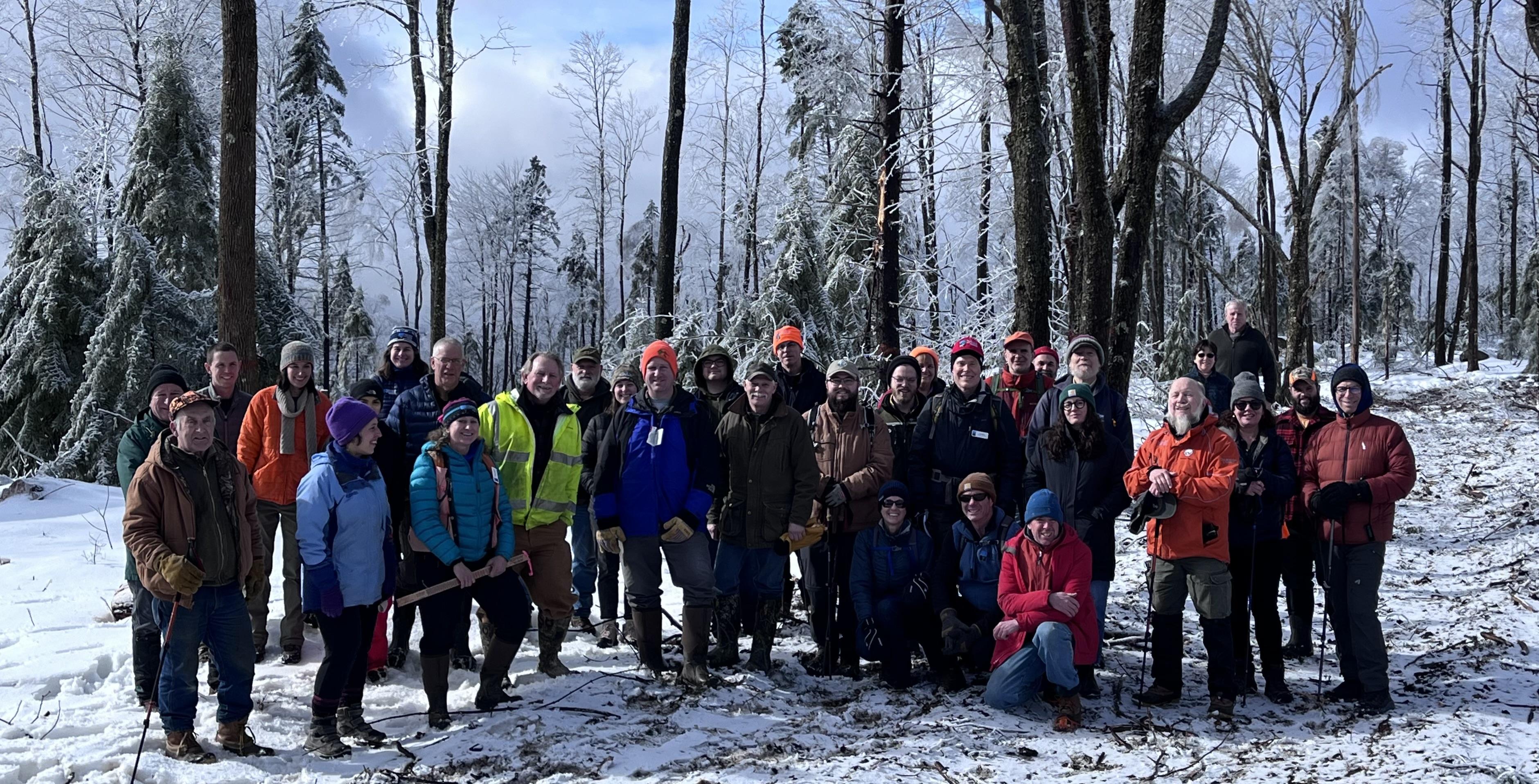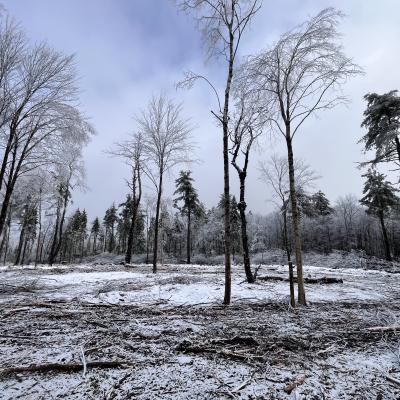Mitigating the Effects of Climate Change through Responsible Forestry

(Photo: Amelia Gardner)
On January 27, 31 attendees joined the Forest Society for a tour of the ongoing timber harvest on the Peirce Reservation in Stoddard. Guiding the tour, Forest Society staff were accompanied by consulting forester Jeff Snitkin of Full Circle Forestry and state extension forester Matt Kelly. Recent weather events had left a thin layer of ice on the trees, creating beautiful conditions for a walk in the woods.
The Peirce Reservation harvest included 150 acres out of a total of 3,500 acres. The goal of the harvest was to improve the forest's current stand and establish a new growth cohort better suited to a warmer climate.
Climate change has already affected the NH timber industry. Winters are shorter with more frequent thaws, creating unpredictable conditions. Thaws cause delays in operations and emphasize the importance of using BMPs (Best Management Practices) to prevent soil damage.

D.H. Hardwick & Sons used every part of the tree in their whole tree harvesting operation. They reinforced skid trails by packing down tree tops with skidders. Because of the rocky and difficult terrain in the Stoddard Highlands, a lot of debris was needed to fill in the road. Jeff explained the decision to use skidders and the BMPs used for water crossings. With warmer winters, flood waters can come suddenly due to combined rain and snow melt events. Jeff requested that the water crossings be temporarily removed due to the recent warm spell and rain to prevent them from being washed away.
Two different areas were worked during this harvest. The lower area was heavily logged in the 1940's and has naturally regenerated. This area consists of red oak dominated mixed forest that is being thinned to allow the best quality stems to grow. Unacceptable, poorly-formed growing stock is being removed to favor commercial trees while not exposing the oaks to too much light for secondary branching.
In the upper stand, also known as Wright Pasture, the stand had regenerated in an abandoned field. Harvesting in the old pasture was designed to regenerate the stand by creating an irregular cluster of shelterwood. This method removed the overstory above the established spruce seedlings. Gaps of half an acre to two acres were created to allow the establishment of a new cohort of trees. Seed trees of climate- and site-adapted species were retained, including paper and yellow birch, white pine, and black cherry.

Creating a mixed forest of multiple ages addresses the uncertainty of our future forests. Major diseases are currently affecting beech, ash, and hemlock, and it is difficult to predict which species will be next and the extent of the damage. Establishing an adapted mixed forest ensures the continuation of forest cover and resilience in the context of climate change and novel diseases.
This resilience can also be used in the context of carbon storage, as explained by Matt Kelly. While carbon storage is maximized in older forests, sequestration is maximized in middle-aged forests. To maximize carbon removal and storage, a strategy of multi-aged, mixed-species forests managed for durable forest products should be used across the landscape. This sustainable method of forest monetization will ensure that forests continue to sequester carbon and prevent land conversion pressures.

Climate change continues to affect aspects of forest management in the Granite State. From unreliable winter conditions to increased tree mortality to the creation of new markets to offset pollution and incentivize storage. Responsible forest management that diversifies and minimizes risk is needed now more than ever to ensure the health of our forests and long-term carbon sequestration and storage.
